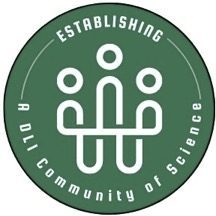Suggested Readings
Atari, Mohammad & Joseph Henrich. 2023. Historical Psychology. Current Directions in Psychological Science 32(2). 176–183. https://journals.sagepub.com/doi/10.1177/09637214221149737
Birdsall, Carolyn & Viktoria Tkaczyk. 2019. Listening to the Archive: Sound Data in the Humanities and Sciences. Technology and Culture 60(2). S1–S13. https://doi.org/10.1353/tech.2019.0061.
Cummings, Anthony R., Jane M. Read & Jose M. V. Fragoso. 2015. Utilizing Amerindian Hunters’ Descriptions to Guide the Production of a Vegetation Map. International Journal of Applied Geospatial Research (IJAGR) 6(1). 118–142. https://doi.org/10.4018/ijagr.2015010107.
Dardar, Hali. 2024. How I Visit with Houma Relatives in the Smithsonian’s Archival Collections. Smithsonian Center for Folklife and Cultural Heritage. https://folklife.si.edu/magazine/houma-relatives-archival-collections?fbclid=IwAR2DfNiMRMS2lMDgVmb_l5sCpd1EXDSjAIRITyjWWhX_V8hY1W-MeqmkdbE_aem_AeSRkJyt-aOLOkiOe0UT0WCbgqlUNZN8UcC0CXZkfbaylMU-9JMaXyRH_ldx5uCPJ3U. (Accessed 26 March, 2024).
Denzin, Norman K., et al., editors. 2008. Handbook of Critical and Indigenous Methodologies. Sage.
Frye, Henrike, Shirley Balar & Aung Si. 2022. Experiences with remote linguistic-ethnobiological fieldwork on bird names in the Qaqet language of Papua New Guinea. https://hdl.handle.net/10125/74683. (Accessed 12 May, 2023).
Garrett, Andrew & Alice C. Harris. 2022. Assessing scholarship in documentary linguistics. Language 98(3). e156–e172. https://doi.org/10.1353/lan.0.0266.
Good, Jeffrey. 25-Apr-20. Interdisciplinarity in areal documentation: Experiences from Lower Fungom, Cameroon. University of Hawai’I Press. http://hdl.handle.net/10125/24941. (Accessed 4 May, 2023).
Gorenflo, L. J., Suzanne Romaine, Russell A. Mittermeier & Kristen Walker-Painemilla. 2012. Co-occurrence of linguistic and biological diversity in biodiversity hotspots and high biodiversity wilderness areas. Proceedings of the National Academy of Sciences 109(21). 8032–8037. https://doi.org/10.1073/pnas.1117511109.
Harmon, David & Jonathan Loh. (2004). The IBCD: A measure of the world’s biocultural diversity. Policy Matters, 13, 271-280.
Harrison, K. David. 2023. Environmental Linguistics. Annual Review of Linguistics 9(1). 113–134. https://doi.org/10.1146/annurev-linguistics-031220-013152.
Hildebrandt, Kristine, Tanner Burge-Beckley & Jacob Sebok. 2019. Language documentation in the aftermath of the 2015 Nepal earthquakes: A guide to two archives and a web exhibit. http://hdl.handle.net/10125/24914. (Accessed 12 May, 2023).
Holton, Gary. 2012. Language archives: They’re not just for linguists any more. University of Hawai’i Press. http://hdl.handle.net/10125/4523. (Accessed 12 May, 2023).
In the Footsteps of the Traveller. University of Toronto Press Distribution. https://utpdistribution.com/9781772840988/in-the-footsteps-of-the-traveller/. (12 February, 2025).
Nations, James D. (2021). Lacandón Maya in the Twenty-First Century: Indigenous Knowledge and Conservation in Mexico’s Tropical Rainforest. Gainesville, FL: University Press of Florida.
Langscape Magazine (Terralingua): https://terralingua.org/past-issues-langscape-magazine/
Lewis, David G. 2023. Tribal Histories of the Willamette Valley. Ooligan Press. https://www.ooliganpress.com/product/tribal-histories-of-the-willamette-valley-by-david-g-lewis/. (Accessed 20 November, 2023).
Loh, Jonathan & David Harmon. (2014). Biocultural diversity: Threatened species, endangered languages, Zeist, The Netherlands: WWF Netherlands.
Lyall, Andrea, Harry Nelson, Daisy Rosenblum & Mark Turin. 2019. Ḵ̓a̱ḵ̓otł̓atła̱no’x̱w x̱a ḵ̓waḵ̓wax̱’mas: Documenting and reclaiming plant names and words in Kwak̓wala on Canada’s west coast. http://hdl.handle.net/10125/24872. (Accessed 12 May, 2023).
Maffi, Luisa & Ellen Woodley. 2010. Biocultural Diversity Conservation: A Global Sourcebook. London: Routledge. https://doi.org/10.4324/9781849774697.
Million, Dian. “Felt Theory: An Indigenous Feminist Approach to Affect and History.” Wicazo Sa Review, vol. 24, no. 2, Oct. 2009, pp. 53–76. muse.jhu.edu, https://doi.org/10.1353/wic.0.0043.
Native Northeast Portal. https://www.nativenortheastportal.com/collections. (Accessed 20 November, 2023).
Pérez Báez, Gabriela, Kristen L. Morio, Alison L. Lapointe, Daryl Baldwin. 2023. On the Impact of the National Breath of Life Archival Institute for Indigenous Languages: Developing an Assessment Model for Archive-Based Revitalization. Language Documentation & Conservation 16: 130-184. https://tinyurl.com/ycxhnusm (Accessed 05 July, 2023).
Rafael, Josha. 2021. Urban Indigenous Second-Language Learning: Impacts on Well-Being. Turtle Island Journal of Indigenous Health 1(2). https://doi.org/10.33137/tijih.v1i2.36047.
Reinholz, Daniel L. & Tessa C. Andrews. 2019. Breaking Down Silos Working Meeting: An Approach to Fostering Cross-Disciplinary STEM–DBER Collaborations through Working Meetings. CBE—Life Sciences Education 18(3). mr3. https://doi.org/10.1187/cbe.19-03-0064.
Ruef, Jennifer L., Stephany Runninghawk Johnson, Michelle M. Jacob, Joana Jansen & Virginia Beavert. 2019. Why STEM Needs Indigenous Traditional Ecological Knowledge: A Case Study of IchishkÃin Math. International Journal of Gender, Science and Technology 11(3). 429–439. https://genderandset.open.ac.uk/index.php/genderandset/article/view/662.
Shoaps, Robin Ann. 2009. Ritual and (im)moral voices: Locating the Testament of Judas in Sakapultek communicative ecology. American Ethnologist 36(3). 459–477. https://doi.org/10.1111/j.1548-1425.2009.01173.x.
Shoaps, Robin A. & Patrick Plattet. 2022. “Tales from the Trail”: Oratory and Affect among Alaska Dog Mushers. Open Anthropological Research 2(1). 1–18. https://doi.org/10.1515/opan-2022-0115.
Smith, Linda Tuhiwai. Decolonizing Methodologies: Research and Indigenous Peoples. Second edition, Zed Books, 2012.
Stanford & & Eglee Zent. Traditional Ecological Knowledge (TEK) and Biocultural Diversity: A Close-up Look at Linkages, Delearning Trends, and Changing Patterns of Transmission. https://www.academia.edu/466108/Traditional_Ecological_Knowledge_TEK_and_Biocultural_Diversity_A_Close_up_Look_at_Linkages_Delearning_Trends_and_Changing_Patterns_of_Transmission. (27 March, 2024).
“Therapeutic Nations.” UAPress, 12 July 2017, https://uapress.arizona.edu/book/therapeutic-nations.
Tuttle, Siri G and Håkan Lundström (2022) “Athabascan Vocal Genres in Interior Alaska” in Lundstrom, Håkan and Jan-Olof Svantesson, Eds., In the Borderland Between Song and Speech. Lund: Lund University Press. Pp 123-187. https://doi.org/10.7765/9789198557770.00009
Wasson, Christina, Gary Holton & Heather S. Roth. 2016. Bringing User-Centered Design to the Field of Language Archives. http://hdl.handle.net/10125/24721. (Accessed 12 May, 2023).
Ways of Knowing – Nebraska Press. University of Nebraska Press. https://www.nebraskapress.unl.edu/nebraska-paperback/9780803270749/ways-of-knowing/. (12 February, 2025).
Whalen, D. H., Melissa E. Lewis, Stefanie Gillson, Brittany McBeath, Bri Alexander & Kate Nyhan. 2022. Health effects of Indigenous language use and revitalization: a realist review. International Journal for Equity in Health 21(1). 169. https://doi.org/10.1186/s12939-022-01782-6. (Accessed 9 June, 2023).
Other Resources
NSF 23-103 Dear Colleague Letter: Stimulating Diversification in Language Science Research (LangDiv)
News, Red Lake Nation. Language Study Review Finds “Language as Treatment” Produces Positive Health Outcomes Among Indigenous People. Red Lake Nation News. https://www.redlakenationnews.com/story/2023/05/24/news/language-study-review-finds-language-as-treatment-produces-positive-health-outcomes-among-indigenous-people/114217.html. (Accessed 9 June, 2023).

